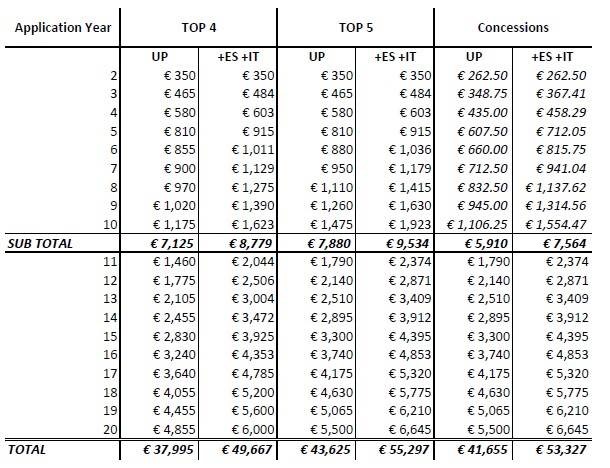Viewed as a critical factor in determining the success of the Unified Patent Court, practitioners and users of the patent system have been eagerly awaiting word on the level at which renewal fees will be set. Too high and potential applicants will be dissuaded from adopting the new scheme. Too low and the UPC runs the risk of not being capable of funding itself.
Proposals for renewal fee levels made by the UPC preparatory committee have now been made public, and the purported figures are consistent with EPO president Benoit Battistelli’s 2014 warning that the renewal fees would be “higher than many would hope, but lower than some might fear.”
It appears that the preparatory committee are considering two options. Both options are similar, each being based on the renewal fees of the states currently most commonly validated under the EPC. In the first option, the UPC renewal fees are calculated on the basis of the sum of the renewal fees of the four most validated signatory states. In the second option, the UPC renewal fees are calculated on the basis of five states but with the concession of a 25% reduction for SMEs, natural persons, non-profit organisations, universities, and public research organisations, though only for the first 10 renewals of the patent.
However, there is a further layer of complication caused by the present reservations of Spain and Italy concerning the language requirements of the UPC. When the UPC is implemented, separate validations in these states will be required in addition to validation as a UP right.
As can be seen from the table, taking into account Spain and Italy adds nearly €12,000, or 25-30%, to the cost renewing a patent for its full 20 year term.
Whichever option is finally implemented, the combined renewal fees of France, Germany, and the UK are much lower than either of the proposed UPC renewal fees whilst still covering a significant proportion of the market. Even taking into account the 25% concession (on the first ten years) for certain eligible entities, the total renewal fees would be more than €2000 less in the three states separately than under the UPC. Accordingly, validation under the EPC in those states alone can be expected to remain a popular and economical choice for many applicants, though those requiring protection in more than the top three would certainly be advised to consider the expanded market covered by a Unitary Patent.
For applicants requiring more extensive coverage, protection in 27 states for the price of 7 will be attractive. All the more so as it will be achieved through a single renewal, simplifying the management of large portfolios. For these reasons, the Unitary Patent could prove to be a preferred choice for corporates.
Whether these costs remain essentially unchanged by the time they are officially formalised remains to be seen. As it stands, the two options set the fees at a level that may not attract a huge share of the applications generated by SMEs, but may prove to be popular with larger companies.

